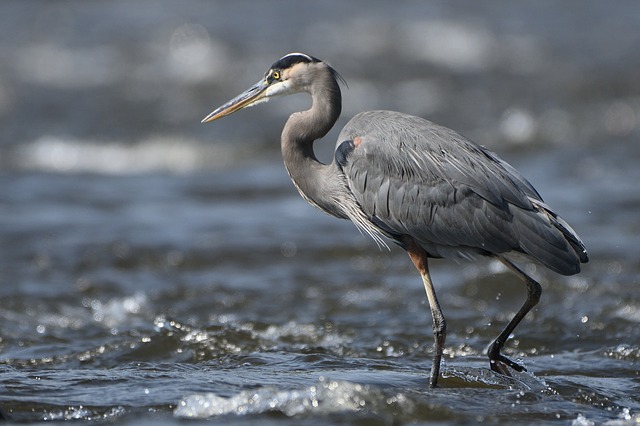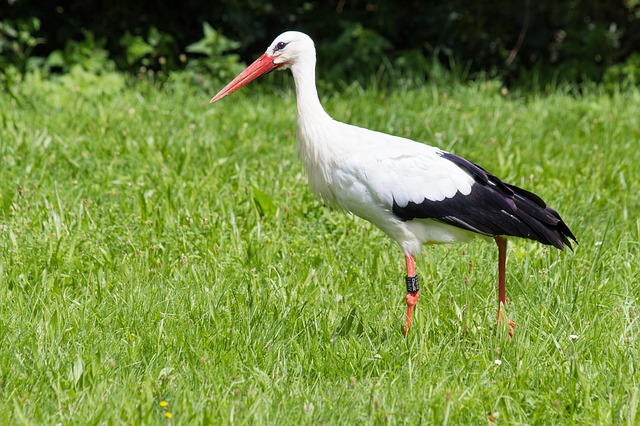
Doting dads, did you know the male rhea builds the nest, incubates the eggs, and takes care of the young? The rheas are paragons of parental care. It’s a bird like no other, and you will be surprised by the following rhea facts.
Rheas Are One Of The Best Dads In The Animal Kingdom
In most animal species, fathers do the fertilization duties and they are never seen again. However, the male rhea is hands-on when it comes to caring for their young. This behavior can be found in its close relatives as well such as the ostrich, emu, and cassowary.
Rhea Chicks Shelter In Their Father’s Wings
For the rheas, the male incubates the eggs; he sits on the eggs for up to 40 days till they hatch. When they hatch, he raises the young. For the chicks to stay comfortable and safe, the dad shelters then under his wings. The male even adopts lost chicks.
You might ask, what is the female doing all this time? While the males are raising the young ones, the females are off mating with other males and leaving them to incubate the eggs and raise the kids.
A Rhea Nest Can Hold Up To 80 Eggs And It Is Built By The Male
Unlike most birds, male rheas build the nest. A single nest holds eggs from different parents. The male digs a hole about a meter in diameter and lines its bottom with vegetation. He then mates with several females and they all lay their eggs in the same nest.
A single nest can contain up to 80 eggs. In contrast, a typical bird nest holds between four to six eggs. If you think that we are done with rhea fun facts wait until you read the next. It seems that these flightless birds are very different from almost all other birds on the planet.
Rheas Roar Like Mammals
Did you know that the bellowing call of a rhea is similar to the roar of a lion rather than a bird’s song? This is mostly used during courtship by males. During the breeding season, the male attempts to attract females by making a loud booming noise that can be heard from afar. While making the call, they will ruffle their plumage, lift the front of their body, extend their wings, and run short distances.
Rheas Have Only Three Toes Unlike Most Birds
Their three-footed toe distinguishes them from ostriches. The ostrich has two toes and most other birds have four. The rhea’s tarsus has between 18 and 22 horizontal plates. This is one of the most interesting facts about rheas.
The Rhea Is The Largest Bird In South America
Standing at about 4 feet and weighing around 50 pounds, the greater rhea is the largest bird in South America. Most rheas are gray but some are brownish-gray or white. Rheas are native to South America only. They are found in Uruguay, Peru, Paraguay, Chile, Brazil, Bolivia, and Argentina. They inhabit woodlands, pampas, and grasslands.
Rheas Are Considered Near Threatened
According to rhea bird facts by National Geographic, rheas are classified as ‘Near Threatened’ because their population is decreasing. They are being hunted for meat and their skin, which is used in the manufacture of leather. The hunting of rheas has significantly thinned their population.
Rheas Are Classified As Ratites
Rheas, ostriches, emus, cassowaries, and kiwis all belong to a class of birds called ratites. The rhea shares similar characteristics with the ostrich including similar facial structure, large feathers, and impressive body size.
Rheas Are Opportunistic Eaters
They enjoy seeds, fruits, and plants. They can also feed on birds, lizards, and insects. Rheas also eat crops. This problem has intensified as grasslands in South America are converted to farmland.
Rheas Are Not As Dangerous As People Think
A rhea is not a bird to be messed with. It has sharp claws that can disembowel a person with a single blow. However one of the rhea facts many people don’t know is that a rhea is much more likely to flee from humans than to attack them.
Start Shopping for Birding Supplies!
Raccoon Pictures
Raccoons are easily recognizable by their black face mask and ringed tail. And there are many fascinating things about this intelligent nocturnal species. So we’ve compiled some of the best raccoon pictures to show you just how amazing and unique they are. Raccoon...
Eagle Pictures
Eagles are large powerful raptors with sharp talons and beaks. These apex predators are typically at top of the food chain and there are many interesting things about them. So we’ve compiled some of the best eagle pictures to show you just how amazing they are. Bald...
Nutria Pictures
Nutria are large semi-aquatic rodents from South America. In the United States where they were originally imported for the fur industry, they are an invasive species. Despite their pest status, there are many interesting things about them. So here are some of the best...
Stork Pictures
Storks are tall wading birds with long legs and necks. These amazing birds have many fascinating things about them. And we’ve compiled some of the top stork pictures to help show you just how interesting and beautiful they are. White Stork The white stork has a body...
Alligator Pictures
The American alligator is a large predatory reptile that inhabits the southeastern United States. It’s a fascinating animal with many interesting things about it. And we’ve collected some of the best alligator pictures to help show you just how amazing they are....
How Long Do Great Blue Herons Live?
The life expectancy of birds is known to be closely related to their size. So as the biggest heron species in North America, how long do great blue herons live? The average life expectancy for these large birds is around fifteen years. However, surviving their first...
Where Do Great Blue Herons Live?
The great blue heron is considered to be the most widespread heron in North America. So exactly where do great blue herons live? Here’s what you’ll want to know. Great Blue Heron Range The great blue heron is found throughout most of the North American continent. In...
Where Do Great Blue Herons Nest?
While many of us have seen great blue herons their nesting habits often remain a mystery to most people. That’s because they purposely nest in hard-to-reach places. So where do great blue herons nest? Here’s the answer. A Colony Nester Typically great blue herons nest...
Do Great Blue Herons Migrate?
Do great blue herons migrate? This is something many people wonder about, especially if they’ve seen a heron during the cold winter months. And the answer is both yes and no. Here’s what you’ll want to know. Great Blue Heron Range The great blue heron has a large...
Great Blue Heron Pictures
Few species of birds are as tall, elegant, and attractive as the great blue heron. So we’ve compiled some of the best great blue heron pictures for you to admire and help you to learn more about this amazing bird! Great Blue Heron Head The head of the great blue heron...
What Do Snapping Turtles Eat?
Many people are familiar with the fact that snapping turtles have an incredibly strong bite. They use their strong jaws and sharp beak not just for defense but also for catching food. So what do snapping turtles eat? Here's what you'll want to know. Snapping turtles...
Birds That Look Like Egrets
Egrets are predatory birds that hunt and live in a range of both freshwater and saltwater habitats. These birds are usually white, and have S-shaped necks, long legs, and dagger-like beaks. However, they are often mistaken for several other types of birds that look...
Birds That Look Like Storks
Storks are large wading birds with robust bills and long legs. These tall carnivorous birds are well-known for their wide wingspans and also for building huge nests. However, they are often confused with several other bird types that have a similar appearance. So...
Birds That Look Like Herons
Herons are tall birds with long slender legs and necks. And they often wade in the water when hunting for food. Yet there are several other types of birds that may be mistaken for them. To make things more confusing many of these birds also spend time in the water and...
Great Blue Heron Facts
The great blue heron is named for its size and the grey-blue color on its wings, stomach, and back. This species has many fascinating things about it. So here are the top great blue heron facts. It's The Largest North American Heron The great blue heron is a big bird...
Are There White Herons?
Are there white herons? This is something many people wonder especially after seeing a tall all-white bird. The answer is yes! And here’s a fast introduction to them. A White Color Morph Most people are familiar with the great blue heron, a large predatory and...
Great White Heron Facts
While many people are familiar with the great blue heron, they are often surprised to find out that there’s also a great white heron. There are many things you’ll want to know about this stunning bird. So here are the top great white heron facts. The Great White Heron...
What Animals Eat Herons?
Because of their size and long sharp beaks, it can be hard to imagine that herons have any natural predators. While they do, they definitely don’t have nearly as many predators as most other types of birds. So what animals eat herons? Predators Of Adult Herons For...
What Do Herons Eat?
Great blue herons are often seen slowly wading in shallow water hunting for food. You may have even spotted one of these large birds in your own backyard pond. This leaves many people wondering: “What do great blue herons eat?” And here’s everything you’ll need to...
What Do Green Herons Eat?
The green heron is a secretive and small heron species. What it lacks in size however it makes up for in intelligence. It is particularly well-known for how it uses its smarts when hunting for food. So what do green herons eat? Read on to find out. Meet The Green...





















